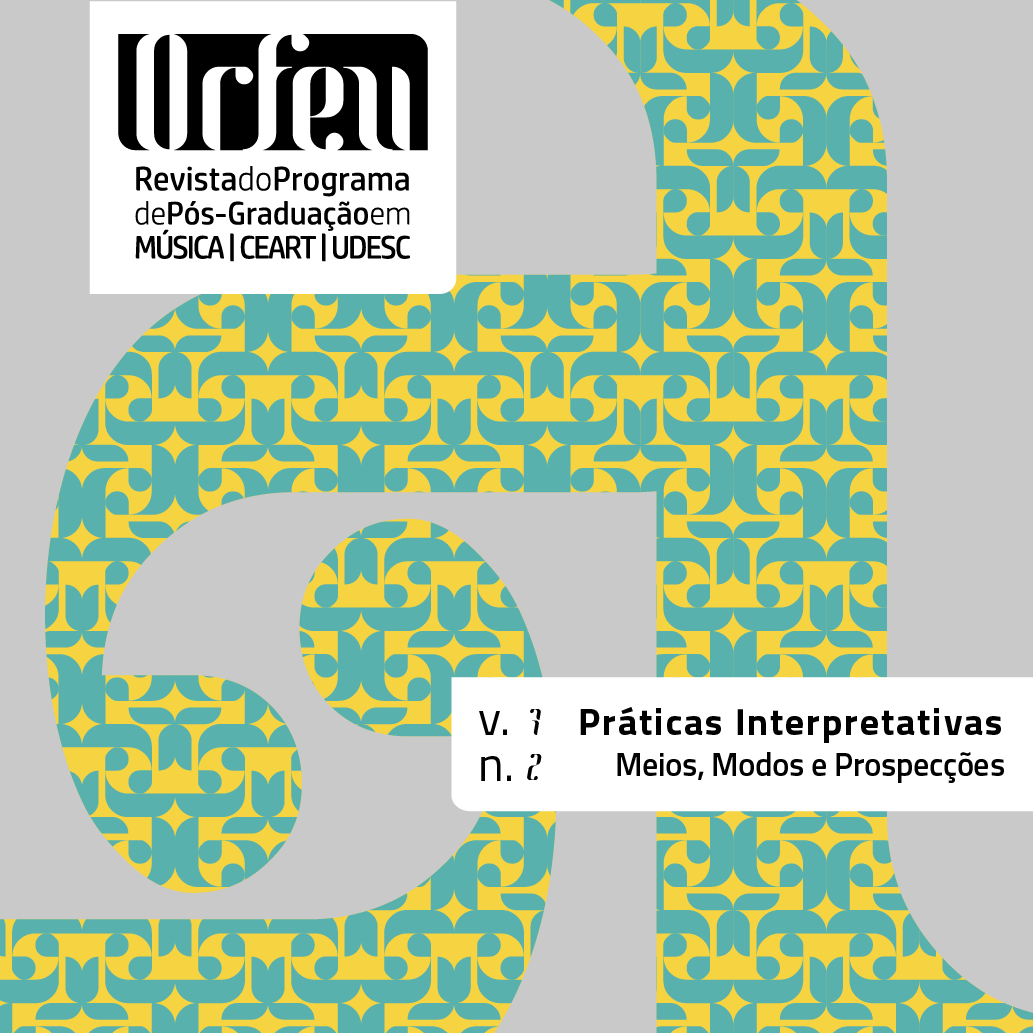Review: Piano.Pearls: who plays has arrived!
DOI:
https://doi.org/10.5965/2525530407022022e0301Keywords:
Piano Pedagogy, Rote teaching, Piano initiationAbstract
The book “Piano.Pears: Who plays has arrived!”, written by the teachers, pianists and songwriters Carla Reis and Liliana Botelho, was released in 2019. The material is made of 18 copyrighted works for begginers, based on teaching by imitation, so that the musical reading is considered one of the aspects to be aproached in the process of teaching a musical instrument. In this regard, the material brings us pedagogical-musical subsidies that include, for instance, keyboard topography, technique acquisition, sound exploration, creativity and understanding of musical structuring elements. The proposal brings solo and duo musicals and makes their recording available on a Youtube channel. The material consists in a practical and feasible possibility that acknowledge the real demands of piano teaching in the 21st century, offering a way that aims musical performance and creation.
Downloads
References
BARROS FILHO, Eduardo Dias de. Relato de Experiência sobre o processo de produção do livro “Pianíssimo – música e poesia”: o ensino por imitação e as praticas criativas no ensino do piano. In: XXV Congresso Nacional da ABEM, 2021, Londrina. Disponível em: http://abemeducacaomusical.com.br/anais_congresso/v4/papers/705/public/705-4300-1-PB.pdf. Acesso em 02/03/2022.
MARCONATTO, Thiago Leme. Aplicações do livro “Piano. Pérolas – quem brinca já chegou!” na iniciação ao piano popular. In: Encontro Internacional sobre Pedagogia do Piano. V, 2019, Florianópolis. Anais [...]. Florianópolis: EINPP, 2020, p. 124-129. Disponível em: https://www.ufsm.br/app/uploads/sites/485/2020/07/ANAIS-VEINPP.pdf. Acesso em 02/03/2022.
MATEIRO, Teresa; ILARI, Beatriz. (Org.). Pedagogias em Educação Musical. Curitiba: Intersaberes, 2012.
Published
How to Cite
Issue
Section
License
Copyright (c) 2022 Helena Uzun, Vania Malagutti

This work is licensed under a Creative Commons Attribution 4.0 International License.
Authors who submit their manuscripts to be published in this journal agree to the following terms:
1. Authors retain the copyright and grant to the journal the right of first publication, whilst simultaneously permitting their work to be licensed under the Creative Commons License Attribution, which allows the sharing of work with recognition of the authorship and initial publication in this journal.
2. Contributions in this journal are open access; this means they are based in free use, and non-commercial applications.






